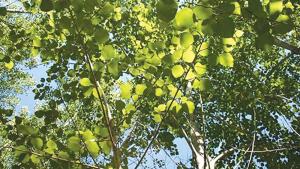2023 - Volume #47, Issue #6, Page #22
[ Sample Stories From This Issue | List of All Stories In This Issue | Print this story
| Read this issue]
Fast Growing Trees Pull Pollutants From Soil, Water
 |
The unique fast-growing trees are naturally hybridized, resulting from cross-pollination and selective breeding between native eastern cottonwoods and the European black poplar. They’re easy to grow, have few insect problems, and must be well watered.
The trees are suited for the Midwest region but would grow in other areas with sandy, well-drained soil.
Due to their incredible growth rates of up to 8 ft. per year, they were originally grown for their wood fiber and lumber. More recently, other desirable properties like pollution remediation have come to light.
The fast-growing trees use their extensive root systems to pull contaminants like sulfates and heavy metals out of soil and water, breaking these impurities down into less harmful forms.
“They establish themselves quickly, and literally help clean the environment of unwanted material because they consume so much water,” says Hauser. “They’re great for natural screens, highways, and burned-out areas, plus they don’t produce the annoying cotton.”
With their high growth rates, they’ve also been shown to target carbon sequestration, gathering CO2 and pumping out oxygen.
Hauser has been growing the InnovaTree for 3 years and is aiming to sell between 2,000 and 3,000 in 2-gal. pots this year once his backorders are filled.
He plans to offer cuttings of 6 to 12 in. for $0.90 to $1.10 per stick and 6 to 7 ft. high potted trees for $30 each.
Contact: FARM SHOW Followup, Dane Hauser, Superior View Farm, 86565 County Hwy J, Bayfield, Wis. 54814 (ph 715-779-5404; www.superiorviewfarm.com).

Click here to download page story appeared in.

Click here to read entire issue
To read the rest of this story, download this issue below or click here to register with your account number.




